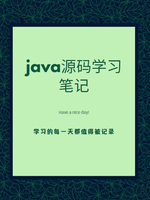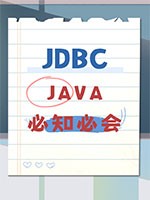1.9.1 系列1
- 字符串是否为空:
public boolean isEmpty() {}
返回字符串的长度:
public int length() {}
拼接,等价于 + :
public String concat(String str) {}
比较字符串是否相等,区分大小写:
public boolean equals(Object anObject){}
比较字符串是否相等,不区分大小写:
public boolean equalsIgnoreCase(String anotherString){}
比较字符串大小,区分大小写,按照 Unicode 编码值比较大小:
public int compareTo(String anotherString){}
比较字符串大小,不区分大小写,按照 Unicode编码值比较大小:
public int compareToIgnoreCase(String str){}
将字符串中大写字母转为小写:
public String toLowerCase(){}
将字符串中小写字母转为大写:
public String toUpperCase(){}
去掉字符串前后空白符:
public String trim(){}
示例:
package com.github.string2.demo;/*** @author maxiaoke.com* @version 1.0**/public class Test {public static void main(String[] args) {String str = "hello world";String s = str.toUpperCase();System.out.println("将字符串中的小写字母转换为大写字母 = " + s);String str2 = "Hello WorLD";String s1 = str2.toLowerCase();System.out.println("将字符串中的大写字母转换为小写字母 = " + s1);String str3 = " hello world ";String s3 = str3.trim();System.out.println("去掉字符串前后空白符 = " + s3);}}
1.9.2 系列2:查找
- 字符串中是否包含子串:
public boolean contains(CharSequence s){}
从前往后查找字符串中的子串,如果有,有返回第一次出现的下标;否则,返回 -1 :
public int indexOf(String str){}
从后往前查找字符串中的子串,如果有,有返回第一次出现的下标;否则,返回 -1 :
public int lastIndexOf(String str){}
示例:
package com.github.string2.demo2;/*** @author maxiaoke.com* @version 1.0**/public class Test {public static void main(String[] args) {String str = "hello world";String str2 = "or";boolean contains = str.contains(str2);if (contains) {System.out.println(str + "中是否包含" + str2);}int index = str.indexOf(str2);System.out.println(str2 + "在" + str + "中从前往后查找的索引是:" + index);index = str.lastIndexOf(str2);System.out.println(str2 + "在" + str + "中从后往前的索引是:" + index);}}
1.9.3 系列3:字符串截取
- 返回一个新的字符串,它是此字符串的从 beginIndex 开始截取到最后的一个子字符串:
返回一个新字符串,它是此字符串从 beginIndex 开始截取到 endIndex (不包含)的一个子字符串:public String substring(int beginIndex){}
public String substring(int beginIndex, int endIndex) {}
示例:
package com.github.string2.demo3;/*** @author maxiaoke.com* @version 1.0**/public class Test {public static void main(String[] args) {String str = "Java is a good computer language";System.out.println(str.substring(5)); // is a good computer languageSystem.out.println(str.substring(5, 11)); // is a g}}
1.9.4 系列4:和字符相关
- 返回 index 位置的字符:
public char charAt(int index){}
将此字符串转换为一个新的字符数组返回:
public char[] toCharArray(){}
返回指定数组中表示该字符序列的 String :
public String(char value[]){}public String(char value[], int offset, int count){}public static String copyValueOf(char data[]){}public static String valueOf(char data[], int offset, int count){}public static String valueOf(char data[]){}
示例:
package com.github.string2.demo4;import java.util.Arrays;/*** @author maxiaoke.com* @version 1.0**/public class Test {public static void main(String[] args) {// 将首字母抓换为大写String str = "hello World";str = Character.toUpperCase(str.charAt(0)) + str.substring(1);System.out.println("str = " + str); // Hello World// 将字符串中的字符按照大小顺序排列String str2 = "helloworldjava";char[] chars = str2.toCharArray();Arrays.sort(chars);System.out.println("chars = " + Arrays.toString(chars)); // [a, a, d, e, h, j, l, l, l, o, o, r, v, w]}}
1.9.5 系列5:编码和解码
编码,将字符串转换为字节数组,按照平台默认的字符编码进行编码:
public byte[] getBytes(){}
编码,按照指定的编码方式进行编码:
public byte[] getBytes(Charset charset){}
解码,将字节数组转换为字符串,按照平台默认的字符编码进行解码:
public String(byte bytes[]) {}public String(byte bytes[], int offset, int length){}
解码,按照指定的编码方式进行解码:
public String(byte bytes[], Charset charset){}public String(byte bytes[], String charsetName) throws UnsupportedEncodingException{}
示例:
package com.github.string2.demo5;import java.nio.charset.StandardCharsets;/*** @author maxiaoke.com* @version 1.0**/public class Test {public static void main(String[] args) {String str = "我爱中国";System.out.println(new String(str.getBytes(StandardCharsets.UTF_8), StandardCharsets.UTF_8));}}
1.9.6 系列6:开头和结尾
- 是否以指定字符串开头:
public boolean startsWith(String prefix){}public boolean startsWith(String prefix, int toffset){}
是否以指定字符串结尾:
public boolean endsWith(String suffix){}
示例:
package com.github.string2.demo6;/*** @author maxiaoke.com* @version 1.0**/public class Test {public static void main(String[] args) {String str = "我爱中国,我喜欢Java语言,但是我的英语不咋的";System.out.println(str.startsWith("我")); // trueSystem.out.println(str.startsWith("我爱")); // trueSystem.out.println(str.startsWith("我爱中国")); // trueSystem.out.println(str.endsWith("不咋的")); // trueSystem.out.println(str.endsWith("咋的")); // trueSystem.out.println(str.endsWith("的")); // true}}
1.9.7 系列7:正则表达式
- 正则表达式:用来专门处理字符串的技术。
- 字符类:
- [abc] :只能是 a 或 b 或 c 。
- [^abc] :除了 a 、b 、c 以外的任意一个字符。
- [a-zA-Z] :必须是 a - z ,A - Z 中的任意一个字符。
- [^a-zA-Z] :除了 a - z ,A - Z 中的任意任意一个字符。
- 数字类:
- [0-9] :只能是 0 和 9 之间的任意一个数字。
- \d :等同于 [0-9] 。
- [^0-9] :除了 0 和 9 之间的任意一个数字。
- \D :等同于 [^0-9] 。
- 预定于字符类:
- . :匹配所有字符。
- \d :等同于 [0-9] 。
- \D :等同于 [^0-9] 。
- \w :等同于 [a-zA-Z_0-9] 。
- \W :等同于 [^a-zA-Z_0-9] 。
- 边界匹配器:
- ^ :行的开头。
- $ :行的结尾。
- 数量类:
- X? :X 字符最多只能出现一次( 0 次或 1 次)。
- X* :X 字符可以出现 0 次、1 次或 多次。
- X+ :X 字符可以出现 1 次或多次。
- X{n} :X 字符只能出现 n 次。
- X{n*,} :X 字符至少出现 n 次(在数学中表示 [n,+∞) )。
- X{n,m} :X 字符只能出现 n 到 m 次(在数学中表示 [n,m] )。
- 字符串是否匹配指定的正则表达式:
public boolean matches(String regex){}
替换,不支持正则:
public String replace(char oldChar, char newChar){}public String replace(CharSequence target, CharSequence replacement){}
替换第一个匹配部分:
public String replaceFirst(String regex, String replacement){}
替换所有匹配部分:
public String replaceAll(String regex, String replacement){}
示例:
package com.github.string2.demo8;/*** 手机号码的规则:* 开头必须是1,长度规定11。* 第二位 3 - 9* 第三位到最后一位 0 - 9** @author maxiaoke.com* @version 1.0**/public class Test {public static void main(String[] args) {String iphone = "13800138000";boolean matches = iphone.matches("^1[3-9]\\d{9}$");System.out.println("matches = " + matches);}}
示例:
package com.github.string2.demo9;/*** @author maxiaoke.com* @version 1.0**/public class Test {public static void main(String[] args) {String str = "hello22world.java;234";// 将其中的非字母替换掉String s = str.replaceAll("[^a-zA-Z]", "");System.out.println("s = " + s);}}
1.9.8 系列8:拆分
- 按照某种规则将字符串进行拆分:
public String[] split(String regex){}
示例:
package com.github.string2.demo10;import java.util.Arrays;/*** @author maxiaoke.com* @version 1.0**/public class Test {public static void main(String[] args) {String str = "张三.23|李四.24|王五.25";// 按照|拆分String regex = "\\|";String[] split = str.split(regex);for (String s : split) {// 按照.进行拆分String[] str2 = s.split("\\.");System.out.println(Arrays.toString(str2));}}}






